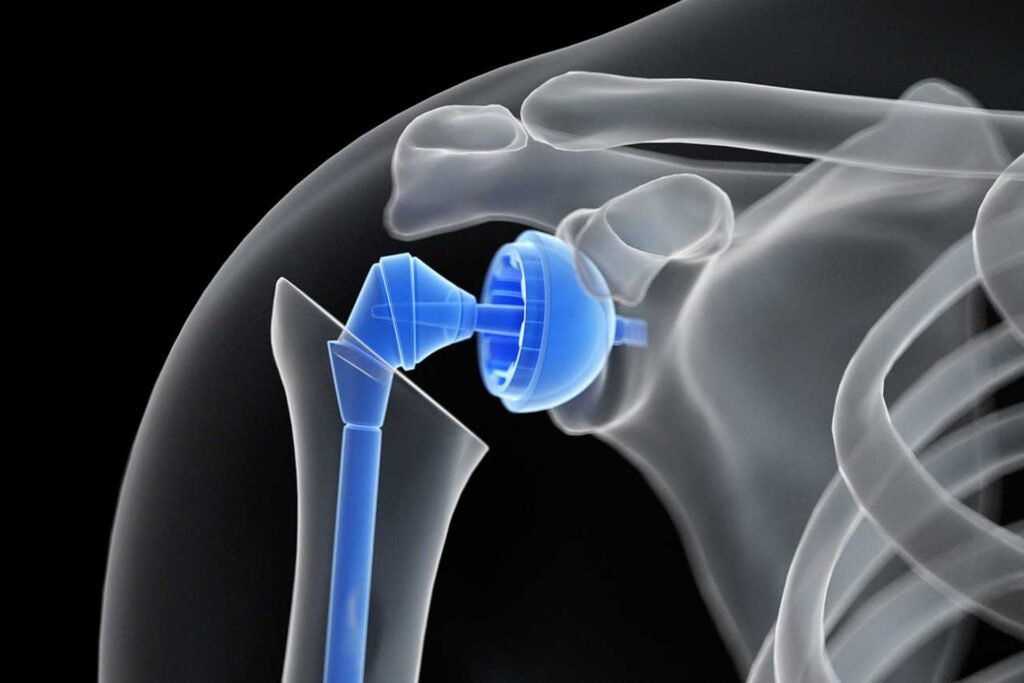Reverse Shoulder Replacement
Quick Contact

Restore Shoulder Strength with Reverse Replacement
Reverse Shoulder Replacement is a specialized surgical procedure designed for patients with severe shoulder arthritis combined with massive rotator cuff tears or failed previous shoulder surgeries. Unlike traditional shoulder replacement, which relies on the rotator cuff for joint movement, reverse shoulder replacement is designed to work even when these key tendons are damaged or non-functional.
In a normal shoulder, the ball is at the top of the upper arm bone (humerus), and the socket is part of the shoulder blade (scapula). In a reverse shoulder replacement, this configuration is reversed—the ball component is attached to the shoulder blade, and the socket is placed on the upper arm bone. This reversal changes the joint mechanics and allows the deltoid muscle to take over the function of the damaged rotator cuff, enabling better shoulder elevation and arm movement.
This surgery is particularly effective for:
- Rotator cuff tear arthropathy (arthritis + tendon tear)
- Failed previous shoulder replacement
- Complex fractures in elderly patients
- Severe shoulder arthritis with deformity
Dr. Dhruv Paul brings expertise in advanced shoulder surgeries and uses modern implants and minimally invasive techniques to reduce post-operative discomfort and speed up recovery. Each procedure is carefully planned using preoperative imaging and tailored to the patient's anatomy and functional goals.
After surgery, patients typically undergo a structured rehabilitation program to regain mobility and strength. While heavy lifting may be restricted, most regain excellent shoulder function for daily tasks like dressing, eating, and reaching overhead.
Reverse Shoulder Replacement offers hope for those who previously had limited surgical options. It restores independence, improves quality of life, and significantly reduces pain in shoulders severely compromised by degenerative or traumatic conditions.

